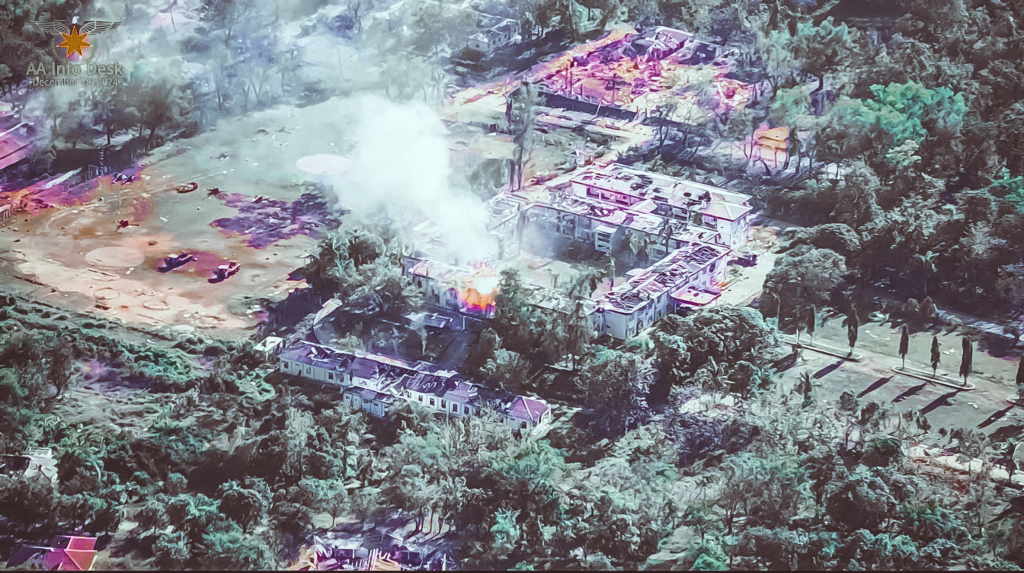Myanmar Spring Chronicle – December 20 Perspective
MoeMaKa, December 21, 2024
The Future of Rakhine State Amid Limited Junta Control
Rakhine State, historically under Myanmar’s kings since the centuries-old monarchic eras, has become a significant battleground in the intensified armed resistance that followed the military coup in 2021. On December 20, 2024, the Arakan Army (AA), an armed ethnic group, announced its capture of the Western Regional Military Command headquarters in Ann Township, the last remaining major junta military base in Rakhine State. This milestone came after prolonged offensives by the AA, culminating in the seizure of the base located in the Minbya-Ann valley. It was also reported that a deputy regional commander and another major general were captured during the operation.
Following the AA’s takeover of the Western Command, the junta retains control over only Sittwe, the state capital, Kyaukpyu—home to China’s investment projects on the Rakhine coastline—and Manaung Island. In the southernmost part of Rakhine State, near the Ayeyarwady Region, Gwa Township remains tenuously under junta control.
Rakhine State, annexed by Myanmar’s King Bodawpaya nearly 240 years ago, now sees the AA gaining control of almost all its territories. This development is viewed as a significant ethnic nationalist victory for the Rakhine people, marking what could be their first such triumph in over two centuries.
Historically, Rakhine existed as an independent region with its own monarchy, akin to the Mon Kingdom, until it was annexed into Myanmar during the Konbaung dynasty. December 31, the date of the annexation, is still commemorated annually as the day Rakhine lost its sovereignty. During the NLD government, remembrance ceremonies were held in Rathedaung and Mrauk-U, but they were marred by police shootings that resulted in fatalities and injuries, as seen in a tragic 2018 incident in Mrauk-U.
The term “Rakhine State” emerged post-independence under the 1974 Constitution and has been used since.
Rise of the Arakan Army
Formed only in 2009, the AA has grown to become one of the most powerful ethnic armed groups within just over a decade, surpassing many older organizations. Under the administration of former General Thein Sein, the AA was not initially recognized as a party to peace negotiations. However, it expanded its manpower and military capability significantly, launching fierce offensives in northern Rakhine and southern Chin State’s Paletwa region by 2018. During this period, the AA entered into temporary ceasefires twice with the junta.
Since the 2021 coup, the AA has leveraged the political and military upheaval to challenge the junta’s central authority. Its military strategies have steadily diminished junta control in Rakhine.
Challenges and Opportunities for Rakhine
Despite these advances, Rakhine’s future hinges on its ability to navigate ongoing resistance against the junta while building a stable and peaceful region. Historically, Myanmar’s military-dominated “Union” system has offered little genuine autonomy or equitable power-sharing, fostering dissatisfaction among ethnic minorities. Many ethnic groups view this as a form of centralized authoritarianism, with the military suppressing both ethnic identities and its own populace.
The AA now faces a critical juncture: whether it can capitalize on this moment to shape its destiny and transition Rakhine from a conflict zone to a peaceful, self-determined region remains to be seen.

